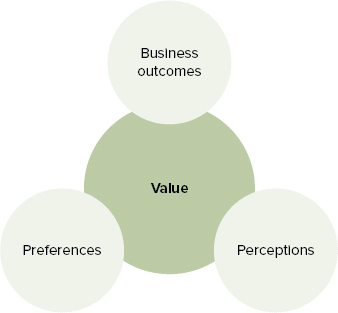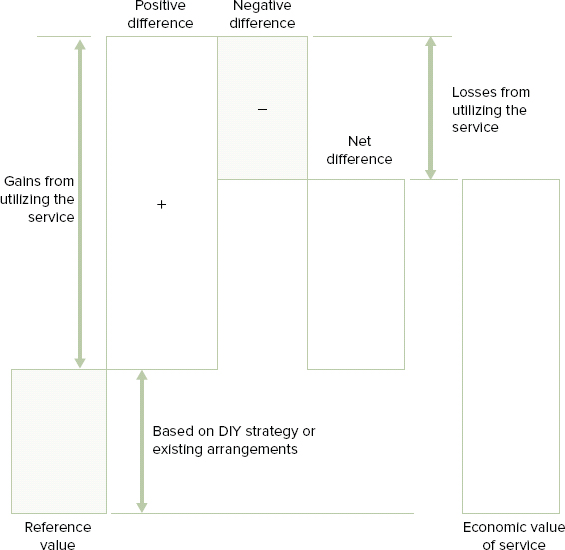Understanding the Service Strategy Stage
This section explores the service strategy lifecycle stage, covering the key concepts and policies defined as part of this stage of the lifecycle.
Purpose and Objectives of Service Strategy
Service strategy is the core stage of the service lifecycle. As its title suggests, the purpose is to define the strategic approach for service management across the whole lifecycle.
This includes understanding the business perspective, position, future plans, and activity patterns that a service provider needs in order to be able to deliver services that meet the business needs. By understanding the business outcomes, we will be able to guide the focus for the whole service lifecycle.
The objectives of service strategy include the following:
- Providing an understanding of what strategy is
- Identifying the services and the customers who use them
- Understanding how to define value creation and delivery
- Providing the means to identify opportunities to provide services and how to make the best of them
- Delivering a comprehensive and clear service provision model, in which we identify how the services will be funded and presented, to whom they will be delivered, and the purpose that they will serve
- Understanding the organizational capability that will be required to deliver services according to the strategy
- Coordinating and documenting the use of service assets for providing services and how they can be used, including optimizing their performance
- Defining the processes and services that will deliver the strategic plans for IT service management and the level of investment that will be required
- Understanding the levels of demand and how to establish a relationship between the service provider and the customer
The service strategy lifecycle stage provides guidance on understanding the most important practices that need to be employed to define and carry out a service strategy in a service provider organization.
Setting the Scope for Service Strategy
By defining the generic principles and process for service management, you can apply them to ensure the consistent management of IT services.
The definition is applicable for use by both internal and external service providers, and the Service Strategy publication provides guidance for both profit and nonprofit service providers for the consistent management of services.
Two aspects are covered by the guidance in service strategy:
- Defining a strategy that gives a service provider guidance and recommendations about delivering services to meet a customer’s business outcomes
- Defining a strategy for managing those services
What Value Does Service Strategy Provide to the Business?
Adopting appropriate best practices as recommended in the ITIL publications can have significant benefits. Implementing standard and consistent approaches for service strategy will provide the following:
- The ability to link the activities carried out by the service provider to the business-critical outcomes that are required by internal or external customers. This will ensure that the service providers are seen to be contributing to the overall organizational value, not just being associated to cost generation.
- The ability to understand the type and levels of service that will support the customers and their success and then to organize them in order to deliver those services. This will be managed by a process of defining strategies and services to ensure a repeatable, consistent approach to delivering valuable services to stakeholders.
- The ability to respond to business change, quickly and efficiently, improving the competitive capability of the organization over time.
- Guidance for creating and maintaining a service portfolio, which shows the overall capability of the service provision to deliver a positive return on investment for the business.
- Support for the transparent communication between the service provider and the customer, ensuring both parties have a consistent understanding of the requirements and their mode of delivery.
- The ability to understand how to organize so that the required services can be delivered in an effective and efficient manner.
Demonstrating the Value of Services
A simple view of the value of a service could be identified as the level to which the service meets the expectation of the customer. For example, a measure of this can be how much the customer is prepared to pay for the service, rather than the actual cost of the service or any specific attribute of the service.
It is difficult to compare services and products, because, unlike products, services do not display much basic and essential value. A service demonstrates its value through what it enables a customer to do. The service provider does not determine the value of a service; the person who receives the service determines it. It will be based on their perception, what the service allows them to do, and what benefit they receive by using the service.
The following are the characteristics of value:
There is a basic calculation of value for most organizations; a service will be seen to be valuable when the value achieved is higher than the cost of purchasing the service.
To properly understand the value of a service, the IT service provider requires three pieces of information:
So, you now understand that the customer is key in deciding the value of a service. But what other factors influence a customer’s understanding of value? See Figure 2.1 for an illustration.
FIGURE 2.1 Components of value
Based on Cabinet Office ITIL material. Reproduced under license from the Cabinet Office.

ITIL identifies three areas that will be used by customers in their understanding of value: the business outcomes achieved, the customer’s preferences, and the customer’s perception of what was delivered. The combination of these three elements will support the value statement. We covered the association of business outcomes with value already, so we will now cover the perceptions and preferences.
Perceptions are influenced by many different factors, including the attributes of a service or the experience of the customer with other similar services or a competitor’s experiences. They may also be affected by the organization’s culture or image; perhaps they are seen as a risk-taking market leader or a solid and mature reliable company. These perceptions will affect the customer preferences.
Service providers need to understand these factors and provide customers with information that helps influence perceptions and respond to preferences.
Figure 2.2 illustrates how this translates to the economic value of a service as determined by the customer.
FIGURE 2.2 How customers perceive value
Based on Cabinet Office ITIL material. Reproduced under license from the Cabinet Office.

Figure 2.2 is based on research completed by Tom Nagle and Reed Holden in 2002. The starting point for customer perception in the diagram is the reference value. This could be based on a number of factors, for example, what the customer has heard about the service or a previous experience with the service or a similar service. It is important for the service provider to understand this reference point, either through consultation with the customer or through appropriate research in the marketplace.
The positive difference shown in Figure 2.2 is based on the customer’s perception of the additional benefits or gains delivered by the service provider.
The negative difference is the perception of the customer of what they would lose if they invested in the service; this could be quality issues or unexpected costs. Understanding the potential negatives, and then matching the features of the service to these, is a way of influencing a customer’s perceptions.
The net difference shown in Figure 2.2 is the perception of the customer of the actual value of the service, once the negatives have been discounted. This could be better or worse than the reference we began with, and it will be this final perception that will support the decision the customer makes about the service.
The economic value represents the overall value of the service, according to the customer’s perception. It includes the “value calculation” shown in Figure 2.2 and is measured by the customer in terms of the ability of the service to meet the required outcomes.
It is important to recognize this strategic approach so you fulfill required outcomes for the business and not just deliver a set of services that you, as a service provider, believe the customer needs. This shift in strategic focus is one of the many cultural changes that ITIL promotes to address the common lack of connection between businesses and their IT departments.
